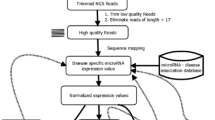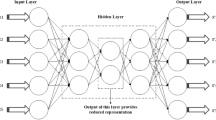Abstract
In recent years, a significant number of deaths worldwide have been due to cancer. Analysis of microarray gene expression data facilitates early cancer identification. The accurate discovery of information for thousands of genes is made possible by DNA microarray technology. In most biological study fields, gene expression analysis is crucial for obtaining the required information. It can be quite difficult to extract useful information from large datasets. Various optimizer outcomes are evaluated in this research on the RNA sequences dataset. The effectiveness of various optimizers which includes adaptive gradient optimization (AdaGrad), adaptive momentum, and stochastic gradient descent (SGD). AdaGrad and Adam are good. This paper presents an efficient framework for predicting cancer type based on the microarray gene expressions using the hybrid CNN + BiLSTM approach which can identify different forms of cancers. The Experimental Results got from the proposed CNN + BiLSTM outperforms the existing CNN and LSTM classifiers with several performance parameters like Classification Accuracy, Precision, Recall and F-measure in terms of 98.3%, 98.1%, 97.8% and 97.94%, respectively.









Similar content being viewed by others
Data availability
The dataset generated and analyzed during the current study are available from the corresponding author on reasonable request.
References
Fotouhi S, Asadi S, Kattan MW. A comprehensive data level analysis for cancer diagnosis on imbalanced data. J Biomed Inf. 2019;90: 103089. https://doi.org/10.1016/j.jbi.2018.12.003.
Id JL, Zhou Z, Dong J, Fu Y, Li Y, Luan Z, et al. Predicting breast cancer 5-year survival using machine learning: a systematic review. PLoS ONE. 2021;16:e0250370-23. https://doi.org/10.1371/journal.pone.0250370.
Kashyap D, Pal D, Sharma R, Garg VK, Goel N, Koundal D, et al. Global increase in breast cancer incidence: risk factors and preventive measures. Biomed Res Int. 2022;2022:9605439. https://doi.org/10.1155/2022/9605439.
Schiff M, Castle PE, Jeronimo J, Rodriguez AC, Wacholder S. Human papillomavirus and cervical cancer. Clin Microbiol Rev. 2007;16:1–17. https://doi.org/10.1128/CMR.16.1.1-17.2003.
Motieghader H, Najafi A, Sadeghi B, Masoudi-nejad A. A hybrid gene selection algorithm for microarray cancer classification using genetic algorithm and learning automata. Inf Med Unlocked. 2017;9:246–54. https://doi.org/10.1016/j.imu.2017.10.004.
Panda M. Elephant search optimization combined with deep neural network for microarray data analysis. J King Saud Univ Comput Inf Sci. 2017;32:940–8. https://doi.org/10.1016/j.jksuci.2017.12.002.
Dargan S, Kumar M, Rohit M, Gulshan A. A survey of deep learning and its applications: a new paradigm to machine learning. Arch Comput Methods Eng. 2020;27(4):1071–92. https://doi.org/10.1007/s11831-019-09344-w.
De Guia JM. DeepGx: deep learning using gene expression for cancer classification. In: Proceeding of the IEEE/ACM international conference on advances in social networks analysis and mining (ASONAM), Vancouver BC Canada, 27–30 August 2019. IEEE; 2019. p. 913–20. https://doi.org/10.1145/3341161.3343516.
Kim B, Yu K, Lee PCW. Cancer classification of single-cell gene expression data by neural network. Bioinformatics. 2020;36:1360–6. https://doi.org/10.1093/bioinformatics/btz772.
Kong Y, Yu T. A deep neural network model using random forest to extract feature representation for gene expression data classification. Sci Rep. 2018;8(1):16477. https://doi.org/10.1038/s41598-018-34833-6.
Sung H, Ferlay J, Siegel RL, Laversanne M, Soerjomataram I, Jemal A, et al. Global cancer statistics 2020: GLOBOCAN estimates of incidence and mortality worldwide for 36 cancers in 185 countries. CA Cancer J Clin. 2021;71(3):209–49. https://doi.org/10.3322/caac.21660.
Gupta S, Gupta MK, Shabaz M, Sharma A. Deep learning techniques for cancer classification using microarray gene expression data. Front Physiol. 2022;13: 952709. https://doi.org/10.3389/fphys.2022.952709.
Abdollahi J, Nouri-Moghaddam B, Ghazanfari M. Deep neural network based ensemble learning algorithms for the healthcare system diagnosis of chronic diseases. ArXiv Preprint. 2021. https://arxiv.org/abs.2103.08182.
Reid A, Klerk ND, Musk AWB. Does exposure to asbestos cause ovarian cancer? A systematic literature review and meta-analysis. Cancer Epidemiol Biomark Prev. 2011;20:1287–95. https://doi.org/10.1158/1055-9965.EPI-10-1302.
Ahn T, Lee C. Deep learning-based identification of cancer or normal tissue using gene expression data. In: Proceeding of the IEEE international conference on bioinformatics and biomedicine (BIBM). Madrid, Spain, 03–06 December 2018. IEEE; 2018. p. 1748–52. https://doi.org/10.1109/BIBM.2018.8621108.
Akkus Z, Galimzianova A, Hoogi A, Rubin DL, Erickson BJ. Deep learning for brain MRI segmentation: state of the art and future directions. J Digit Imaging. 2017;30(4):449–59.
Alomari OA, Khader AT, Al-Betar MA, Awadallah MA. A novel gene selection method using modified MRMR and hybrid bat-inspired algorithm with β-hill climbing. Appl Intell (Dordr). 2018;48(11):4429–47. https://doi.org/10.1007/s10489-018-1207-1.
Danaee P, Ghaeini R, Hendrix DA. A deep learning approach for cancer detection and relevant gene identification. Pac Symp Biocomput. 2017;22:219–29. https://doi.org/10.1142/9789813207813_0022.
Daoud M, Mayo M. A survey of neural network-based cancer prediction models from microarray data. Artif Intell Med. 2019;97:204–14. https://doi.org/10.1016/j.artmed.2019.01.006.
Lecun Y, Bengio Y, Hinton G. Deep learning. Nature. 2015;521(7553):436–44. https://doi.org/10.1038/nature14539.
Guo Y, Liu S, Li Z, Shang X. BCDForest: a boosting cascade deep forest model towards the classification of cancer subtypes based on gene expression data. BMC Bioinform. 2018;19(5):118–213. https://doi.org/10.1186/s12859-018-2095-4.
Gupta G, Manoj G. Deep learning for brain tumor segmentation using magnetic resonance images. In: Proceeding of the IEEE conference on computational intelligence in bioinformatics and computational biology (CIBCB), Melbourne, Australia, 13–15 October 2021. IEEE; 2021. p. 1–6. https://doi.org/10.1109/CIBCB49929.2021.9562890.
Joshi P, Park T. Cancer subtype classification based on super layered neural network. In: Proceeding of the IEEE international conference on bioinformatics and biomedicine, San Diego, CA, USA, 18–21 November 2019. IEEE; 2019. p. 1988–92. https://doi.org/10.1109/BIBM47256.2019.8983343.
Aziz R, Verma CK, Srivastava N. A novel approach for dimension reduction of microarray. Comput Biol Chem. 2017;71:161–9. https://doi.org/10.1016/j.compbiolchem.2017.10.009.
Chaunzwa TL, Hosny A, Xu Y, Shafer A, Diao N, Lanuti M, et al. Deep learning classification of lung cancer histology using CT images. Sci Rep. 2021;1:5471. https://doi.org/10.1038/s41598-021-84630-x.
Huynh P, Nguyen V, Do T. Novel hybrid DCNN–SVM model for classifying RNA-sequencing gene expression data. J Inf Telecommun. 2019;3:533–47. https://doi.org/10.1080/24751839.2019.1660845.
Jerez M, Franco L, Veredas FJ, Lo G. Transfer learning with convolutional neural networks for cancer survival prediction using gene-expression data. PLoS ONE. 2020;15:e0230536-24. https://doi.org/10.1371/journal.pone.0230536.
Shon HS, Yi Y, Kim KO, Cha E, Kim K. Classification of stomach cancer gene expression data using CNN algorithm of deep learning. J Biomed Transl Res. 2021;20(1):15–20. https://doi.org/10.12729/jbtr.2019.20.1.015.
Basavegowda HS, Dagnew G. Deep learning approach for microarray cancer data classification. CAAI Trans Intell Technol. 2020;5:22–33. https://doi.org/10.1049/trit.2019.0028.
Chen X, Xie J, Yuan Q. A method to facilitate cancer detection and type classification from gene expression data using a deep autoencoder and neural network. Mach Learn. 2018. https://arxiv.org/abs1812.08674.
Ching T, Zhu X, Garmire LX. Cox-nnet: an artificial neural network method for prognosis prediction of high-throughput omics data. PLoS Comput Biol. 2018;14:e1006076-18. https://doi.org/10.1371/journal.pcbi.1006076.
Dwivedi AK. Artificial neural network model for effective cancer classification using microarray gene expression data. Neural comput Appl. 2016;29:1545–54. https://doi.org/10.1007/s00521-016-2701-1.
Salman I, Ucan O, Bayat O, Shaker K. Impact of metaheuristic iteration on artificial neural network structure in medical data. Processes. 2018;6:57. https://doi.org/10.3390/pr6050057.
Cho H, Lee S, Ji YG, Hyeon D, Id L. Association of specific gene mutations derived from machine learning with survival in lung adenocarcinoma. PLoS ONE. 2018;13: e0207204. https://doi.org/10.1371/journal.pone.0207204.
Ronoud S, Asadi S. An evolutionary deep belief network extreme learning-based for breast cancer diagnosis. Soft Comput. 2019;23:13139–59. https://doi.org/10.1007/s00500-019-03856-0.
Gupta S, Gupta MK. Computational model for prediction of malignant mesothelioma diagnosis. Comput J. 2021. https://doi.org/10.1093/comjnl/bxab146.
Gupta S, Gupta MK. A comprehensive data-level investigation of cancer diagnosis on imbalanced data. Comput Intell. 2021;38:156–86. https://doi.org/10.1111/coin.12452.
Extraction SF. Prognosis prediction of human breast cancer by integrating deep neural network and support vector machine supervised feature extraction and classification for breast cancer prognosis prediction. In: Proceeding international congress on image and signal processing, BioMedical engineering and informatics (CISP-BMEI), Shanghai China, 14–16 October 2017. IEEE; 2017. https://doi.org/10.1109/CISP-BMEI.2017.8301908.
Gao F, Wang W, Tan M, Zhu L, Zhang Y, Fessler E, et al. DeepCC: a novel deep learning-based framework for cancer molecular subtype classification. Oncogenesis. 2019;8:44. https://doi.org/10.1038/s41389-019-0157-8.
García-díaz P, Sánchez-berriel I, Martínez- JA, Diez-pascual AM. Unsupervised feature selection algorithm for multiclass cancer classification of gene expression RNA-Seq data. Genomics. 2019;112:1196. https://doi.org/10.1016/j.ygeno.2019.11.004.
Lin M, Jaitly V, Wang I, Hu Z, Chen L, Wahed M, et al. Application of deep learning on predicting prognosis of acute myeloid leukemia with cytogenetics age and mutations. Mach Learn. 2018. https://arxiv.org/abs1810.13247.
Parvathavardhini S, Manju S. Cancer gene detection using Neuro fuzzy classification algorithm. Int J Sci Res Comput Sci Eng Inf Technol. 2020;3(3):2456.
Sevakula RK, Singh V, Member S, Kumar C, Cui Y. Transfer learning for molecular cancer classification using deep neural networks. IEEE/ACM Trans Comput Biol Bioinform. 2018;5963:2089–100. https://doi.org/10.1109/TCBB.2018.2822803.
Gupta S, Gupta M. Deep learning for brain tumor segmentation using magnetic resonance images. In: Proceeding of the IEEE conference on computational intelligence in bioinformatics and computational biology, Melbourne, Australia, 13–15 October 2021. IEEE; 2021. https://doi.org/10.1109/CIBCB49929.2021.9562890.
Huang Z, Johnson TS, Han Z, Helm B, Cao S, Zhang C, et al. Deep learning-based cancer survival prognosis from RNA-seq data: approaches and evaluations. BMC Med Genom. 2020;13(5):1–12. https://doi.org/10.1186/s12920-020-0686-1.
Gupta S, Gupta MK. A comparative analysis of deep learning approaches for predicting breast cancer survivability. Arch Comput Methods Eng. 2021;29:2959–75.
Kumar Y, Gupta S, Singla R, Chen Y. A systematic review of artificial intelligence techniques in cancer prediction and diagnosis. Arch Comput Methods Eng. 2021;29(4):2043–70. https://doi.org/10.1007/s11831-021-09648-w.
Gupta S. Computational prediction of cervical cancer diagnosis using ensemble-based classification algorithm. Comput J. 2021. https://doi.org/10.1093/comjnl/bxaa198.
He B, Luo H, Zhou Z, Wang B, Liang Y, Lang J, et al. A neural network framework for predicting the tissue-of-origin of 15 common cancer types based on RNA-seq data. Front Bioeng Biotechnol. 2020;8(8):737–811. https://doi.org/10.3389/fbioe.2020.00737.
Funding
No funding has been raised.
Author information
Authors and Affiliations
Corresponding author
Ethics declarations
Conflict of Interest
There is no conflict of interest.
Additional information
Publisher's Note
Springer Nature remains neutral with regard to jurisdictional claims in published maps and institutional affiliations.
This article is part of the topical collection “Advances in Computational Approaches for Image Processing, Wireless Networks, Cloud Applications and Network Security” guest edited by P. Raviraj, Maode Ma and Roopashree H R.
Rights and permissions
Springer Nature or its licensor (e.g. a society or other partner) holds exclusive rights to this article under a publishing agreement with the author(s) or other rightsholder(s); author self-archiving of the accepted manuscript version of this article is solely governed by the terms of such publishing agreement and applicable law.
About this article
Cite this article
Metipatil, P., Bhuvaneshwari, P., Basha, S.M. et al. An Efficient Framework for Predicting Cancer Type Based on Microarray Gene Expressions Using CNN-BiLSTM Technique. SN COMPUT. SCI. 4, 381 (2023). https://doi.org/10.1007/s42979-023-01774-5
Received:
Accepted:
Published:
DOI: https://doi.org/10.1007/s42979-023-01774-5




